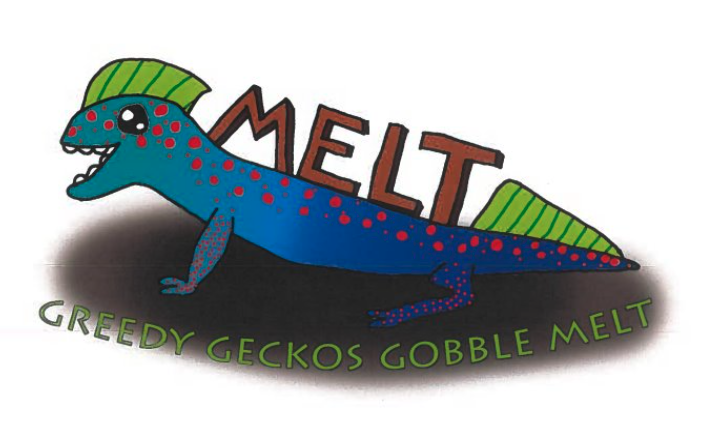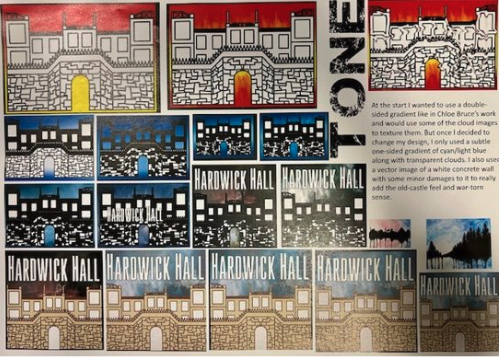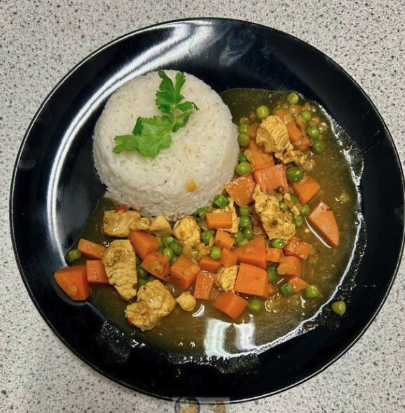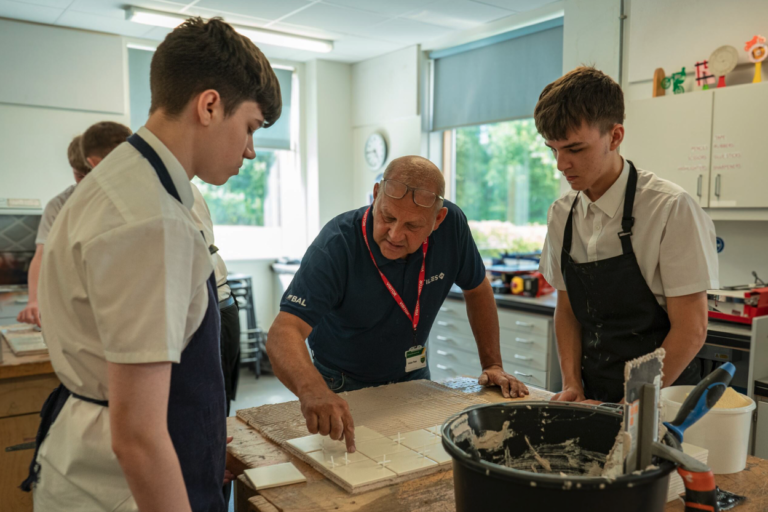CURRICULUM
Design Technology
DT Curriculum Intent
Design and Technology develops students’ understanding of the ‘physical’ world. They learn to design, make and evaluate everyday products, considering their own and others’ needs, wants and values. Key concepts include creativity and imagination. Rather than contribute to a disposable society, students become proactive thinkers, able to appreciate the effort, time and resources used to create all products. They explore how they can reduce their impact while still having an impact.
Click here to see where DT can take you
Key Strands
Design
- use research and exploration, such as the study of different cultures, to identify and understand user needs
- identify and solve their own design problems and understand how to reformulate problems given to them
- develop specifications to inform the design of innovative, functional, appealing products that respond to needs in a variety of situations
- use a variety of approaches [for example, biomimicry and user-centred design], to generate creative ideas and avoid stereotypical responses
- develop and communicate design ideas using annotated sketches, detailed plans, 3-D and mathematical modelling, oral and digital presentations and computer-based tools
- select from and use specialist tools, techniques, processes, equipment and machinery precisely, including computer-aided manufacture
- select from and use a wider, more complex range of materials, components and ingredients, taking into account their properties
Make
Evaluate
- analyse the work of past and present professionals and others to develop and broaden
their understanding - investigate new and emerging technologies
- test, evaluate and refine their ideas and products against a specification, taking into
account the views of intended users and other interested groups - understand developments in design and technology, its impact on individuals, society and the environment, and the responsibilities of designers, engineers and technologists
- understand and use the properties of materials and the performance of structural
elements to achieve functioning solutions - understand how more advanced mechanical systems used in their products enable
changes in movement and force - understand how more advanced electrical and electronic systems can be powered and used in their products [for example, circuits with heat, light, sound and movement as inputs and outputs]
- apply computing and use electronics to embed intelligence in products that respond to inputs [for example, sensors], and control outputs [for example, actuators], using
programmable components [for example, microcontrollers]
Technical Knowledge
Cooking & Nutrition
- understand and apply the principles of nutrition and health
- cook a repertoire of predominantly savoury dishes so that they are able to feed
- themselves and others a healthy and varied diet
- become competent in a range of cooking techniques [for example, selecting and
- preparing ingredients; using utensils and electrical equipment; applying heat in different
- ways; using awareness of taste, texture and smell to decide how to season dishes and
- combine ingredients; adapting and using their own recipes]
- understand the source, seasonality and characteristics of a broad range of ingredients.
Cooking & Nutrition
Year 7

Cooking & Nutrition
Students will acquire a range of food skills, increasing in complexity and accuracy, to cook a range of dishes, safely and hygienically, and to apply their knowledge of nutrition and food provenance.
Skills -
Preparation Techniques
• Weighing and measuring
• Chopping
• Peeling
• Rub-in
• Sieving
• Segmenting
• Slicing
Cooking Techniques
• Boiling
• Baking
• Grilling (griddling)
Presentation techniques
• Portion control
• Creativity

Year 8

Cooking & Nutrition
Students will develop and demonstrate a range of food skills, increasing in complexity and accuracy, to cook a range of dishes, safely and hygienically, and to apply their knowledge of nutrition and food provenance. In addition, they will consider the factors that affect food choice, food availability and food waste.
Skills -
Preparation Techniques
• Weighing and measuring
• Chopping
• Peeling
• Rub-in
• Sieving
• Segmenting
• Slicing
Cooking Techniques
• Boiling
• Baking
• Grilling (griddling)
Presentation techniques
• Portion control
• Creativity

Year 9

Cooking & Nutrition
Students will be able to secure and demonstrate a range of food skills, increasing in complexity and accuracy, to cook a wider range of dishes, safely and hygienically, and to apply their knowledge of nutrition and food provenance. In addition, they will consider consumer issues, food and its functions and new trends in food.
Skills -
Preparation Techniques
• Weighing and measuring
• Chopping
• Peeling
• Whisking
• Melting
• Rub-in
• Sieving
• Slicing
• Hydrating
Cooking Techniques
• Boiling
• Baking
• Grilling (griddling)
• Frying
Presentation techniques
• Portion control
• Position on serving dish
• Garnish
• Creativity

Resistant Materials
Year 7

Resistant Materials
Students will design and make a Phone Holder from Resistant Materials. This project will serve as an introduction to a range of tools, equipment, processes and skills which they will use moving forward in Resistant Materials. They will hone their drawing skills by drawing their product in isometric view before learning to colour render in order to represent the materials used in manufacture.
Skills -
Template making
Use of coping and tenon saw
Use of bandfacer, rasp, file and abrasive paper
Marking out
Use of pillar drill
Use of line bender and sheet metal bender
Use of rivet gun
Designing
Annotation
Rendering techniques
Evaluation & reflection

Year 8

Resistant Materials
Students will design and make an LED Lamp prototype from Resistant Materials. They will develop a range of practical skills and hone their drawing skills and presentation techniques.
Skills -
Use of coping and tenon saw
Use of bandfacer, rasp, file and abrasive paper
Marking out
Use of pillar drill
Thermoforming
Vacuum forming
Soldering & wiring
Sketching
Rendering techniques
Evaluation & reflection

Year 9

Resistant Materials
Students will design and make a clock for The Design Museum. They will use mood boards to inform their design. Once designed, they will realise their idea by making a prototype.
Skills -
Sketching techniques
Rendering & presentation techniques
Annotation & labelling
Marking out
Use of appropriate tools for cutting, shaping and finishing techniques in wood and acrylic.
Vector drawing using 2D design to produce CAD/CAM laser cut components
Assembly methods using standard component parts.

Graphics
Year 7

Graphics
Students will design and make a logo and packaging for a new chocolate bar. They will use a mood board to inform/inspire their design and, once designed, transfer their design to Photoshop. Students will also learn basic graphic skills, in order to help them understand graphic communication.
Skills -
Mood boards
Product analysis
Specifications
Designing
Annotation
Typography experimentation
Net construction
Evaluation & reflection

Year 8

Graphics
Students will design and make a Paper Dude character of their choice. They will use a mood board to inform their design and, once designed, transfer their design to Photoshop. Students will also learn basic Electronics, in order to add a light to their Paper Dude.
Skills -
Mood boards
Designing
Rendering
Soldering
Photoshop
Net construction
Reflection & evaluation

Year 9

Graphics
Students will design and make a logo and promotional items for a festival of their choice. They will gather research to inform their designs and, once designed, use a range of CAD packages to create their logo and promotional items using ICT. Students will also learn about the key components of graphic design.
Skills -
Research
Colour exploration
Typography exploration
Product analysis
Designing
Rendering
2D design
Photoshop
Evaluation & reflection

Year 10 And Year 11 (KS4)
Key Strands
Component 1: Portfolio 60%
Each student must select and present a portfolio representative of their Graphics work.
The portfolio must include both:
- A sustained project developed in response to a subject, theme, task or brief evidencing the journey from initial engagement with an idea(s) to the realisation of intentions.
- A selection of further work resulting from activities such as trials and experiments; skills-based workshops; mini and/or foundation projects; responses to gallery, museum or site visits; work placements; independent study and evidence of the student’s specific role in any group work undertaken.
AQA will provide a separate externally set assignment, with seven different starting points. Students must select and respond to one starting point.
The externally set assignment provides students with the opportunity to demonstrate, through an extended creative response, their ability to draw together different areas of knowledge, skills and/or understanding in response to their selected starting point.
Component 2: Externally Set Assignment 40%
Year 10

PROJECT 1 THE ART OF ALBUM COVERS
Students are the given the theme of ‘Album Covers’. This theme can then be taken in any direction they choose but will be guided by the teacher.
Students research given artists and produce samples, explorative work and annotation.
Using their theme and the artists as inspiration, students will design and make their own graphical outcome
Skills -
Within the context of graphic communication, students must demonstrate the ability to:
• use graphic communication techniques and processes, appropriate to students’ personal intentions,
for example:
typography
illustration
digital and/or non-digital photography
hand rendered working methods
digital working methods
• use media and materials, as appropriate to students’ personal intentions,
for example:
pencil, pen and ink, pen and wash, crayon, and other graphic media
watercolour, gouache and acrylic paint
layout materials
digital media
printmaking
mixed media.


Project 2 Poster
Students are the given the theme of ‘Places, spaces, hobbies and interests. This theme can then be taken in any direction they choose to create a poster to inspire interest. This will be guided by the teacher. Students research given artists, Liam brazier, Tom Eckersley and Alan Kitching to support the production of samples, explorative work and supporting annotation. Using their theme and the artists as inspiration, students will design and make their own graphical outcome.
Skills -
Students must demonstrate the development of the same skill set outlined within topic one in order to ensure well executed outcomes. The skills explored throughout the project can and will be based on learners' individual strengths and interests within the subject context as the media used is open to their own interpretation to link designs to the style of an existing designer.
Year 11

Project 2 Poster
Students are the given the theme of ‘Places, spaces, hobbies and interests. This theme can then be taken in any direction they choose to create a poster to inspire interest. This will be guided by the teacher. Students research given artists, Liam brazier, Tom Eckersley and Alan Kitching to support the production of samples, explorative work and supporting annotation. Using their theme and the artists as inspiration, students will design and make their own graphical outcome.
Skills -
Students must demonstrate the development of the same skill set outlined within topic one in order to ensure well executed outcomes. The skills explored throughout the project can and will be based on learners' individual strengths and interests within the subject context as the media used is open to their own interpretation to link designs to the style of an existing designer.


Externally Set Assignment
Students pick an AQA externally set assignment from a choice of seven. This theme can then be taken in any direction they choose but will be guided by the teacher.
Students research given artists and produce samples, explorative work and annotation.
Using their theme and the artists as inspiration, students will design and make their own graphical outcome. This will be completed mainly in a 10 hour supervised but un-aided exam.
Skills -
Within the context of graphic communication, students must demonstrate the ability to:
• use graphic communication techniques and processes, appropriate to students’ personal intentions,
for example:
typography
illustration
digital and/or non-digital photography
hand rendered working methods
digital working methods
• use media and materials, as appropriate to students’ personal intentions,
for example:
pencil, pen and ink, pen and wash, crayon, and other graphic media
watercolour, gouache and acrylic paint
layout materials
digital media
printmaking
mixed media.

Textiles
Year 7

Textiles
Students will design and make an Ugly Doll from fabric of their choice. They will learn how to use basic hand equipment correctly and safely. They will be introduced to surface decoration by learning how to do reverse applique, embroidery and sewing components on like sequins. They will develop pattern making and cutting skills. They will learn about the sewing machine and how to sew a straight stitch and finally how to stuff an item to make it 3D and finish it off.
Skills -
Hand Embroidery
Reverse Applique
Button & Sequin Attachment
Designing
Annotation
Use of the sewing machine
Tacking
Slip stitching
Evaluation & reflection

Year 8

Textiles
Students will design and make a cushion. They will use sweet wrapper resources as a starting point to produce sketches based on pattern and text. They will sample techniques such as batik, reverse applique and embroidery and will then use them decorate their product. Students will also learn basic colour into fabric techniques, machine applique, finishing processes and will develop sewing machine skills.
Skills -
Observational drawing
Batik
Hand embroidery
Machine appliques
Designing
Annotation
Hemming
Use of the sewing machine
Tacking
Evaluation & reflection

Year 9

Textiles
Students will design and make a bag inspired by African Art and the work of Jules McKeown, the pattern social. They will learn about repeat patterns, mark making, different printing methods and how to do hand patchwork. They will then go on to design and make a bag using the skills they have learnt.
Skills -
Observational drawing
Mood boards
Styrofoam printing
Block printing
Hand patchwork
Designing
Annotation
Hemming
Use of the sewing machine
Tacking
Evaluation & reflection

Year 10 And Year 11 (KS4)
Key Strands
Component 1: Portfolio 60%
Each student must select and present a portfolio representative of their Textile work.
The portfolio must include both:
- A sustained project developed in response to a subject, theme, task or brief evidencing the journey from initial engagement with an idea(s) to the realisation of intentions.
- A selection of further work resulting from activities such as trials and experiments; skills-based workshops; mini and/or foundation projects; responses to gallery, museum or site visits; work placements; independent study and evidence of the student’s specific role in any group work undertaken.
AQA will provide a separate externally set assignment, with seven different starting points. Students must select and respond to one starting point.
The externally set assignment provides students with the opportunity to demonstrate, through an extended creative response, their ability to draw together different areas of knowledge, skills and/or understanding in response to their selected starting point.
Component 2: Externally Set Assignment 40%
Year 10

Project 1 In the News
Students are the given the theme of ‘In the news’. This theme can then be taken in any direction they choose but will be guided by the teacher. Students research given artists and produce samples, explorative work and annotation. Using their theme and the artists as inspiration, students will design and make their own graphical outcome.
Skills -
Within the context of textile design, students must demonstrate the ability to: • use textile design techniques and processes, appropriate to students’ personal intentions,
for example:
weaving
felting
stitching
appliqué
construction methods
printing.
• use media and materials, as appropriate to students’ personal intentions,
for example:
inks
yarns
threads
fibres
fabrics
textile materials
digital imagery.


Project 2 Structures
Students are the given the theme of ‘Structures’. This theme can then be taken in any direction they choose but will be guided by the teacher. Students research given artists and produce samples, explorative work and annotation. Using their theme and the artists as inspiration, students will design and make their own textile outcome.
Skills -
Within the context of textile design, students must demonstrate the ability to: • use textile design techniques and processes, appropriate to students’ personal intentions,
for example:
weaving
felting
stitching
appliqué
construction methods
printing.
• use media and materials, as appropriate to students’ personal intentions,
for example:
inks
yarns
threads
fibres
fabrics
textile materials
digital imagery.

Year 11

Project 2 Structures
Students are the given the theme of ‘Structures’. This theme can then be taken in any direction they choose but will be guided by the teacher. Students research given artists and produce samples, explorative work and annotation. Using their theme and the artists as inspiration, students will design and make their own textile outcome.
Skills -
Within the context of textile design, students must demonstrate the ability to: • use textile design techniques and processes, appropriate to students’ personal intentions,
for example:
weaving
felting
stitching
appliqué
construction methods
printing.
• use media and materials, as appropriate to students’ personal intentions,
for example:
inks
yarns
threads
fibres
fabrics
textile materials
digital imagery.


Externally Set Assignment
Students pick an AQA externally set assignment from a choice of seven. This theme can then be taken in any direction they choose but will be guided by the teacher. Students research given artists and produce samples, explorative work and annotation. Using their theme and the artists as inspiration, students will design and make their own textile outcome. This will be completed mainly in a 10 hour supervised but un-aided exam.
Skills -
Within the context of textile design, students must demonstrate the ability to: • use textile design techniques and processes, appropriate to students’ personal intentions,
for example:
weaving
felting
stitching
appliqué
construction methods
printing.
• use media and materials, as appropriate to students’ personal intentions,
for example:
inks
yarns
threads
fibres
fabrics
textile materials
digital imagery.

Hospitality & Catering (Ks4)
Year 10 And Year 11
Key Strands
Unit 1 The Hospitality and Catering Industry
The applied purpose of this unit is for learners to use their knowledge and understanding of the hospitality and catering industry in order to propose new hospitality and catering provision to meet specific needs. Pupils will sit an external exam at the end of Year 10. This unit is worth 40% of the overall grade.
The applied purpose of this unit is for learners to safely plan, prepare, cook and present nutritional dishes. Pupils will complete this internal through a controlled assessment which includes a 3-hour practical exam. This unit is worth 60% of the overall grade.
Unit 2 Hospitality and Catering in Action
Year 10

Unit 1 The Hospitality and Catering Industry
Understand the environment in which hospitality and catering providers operate
Skills -
AC1.1 describe the structure of the hospitality and catering industry
AC1.2 analyse job requirements within the hospitality and catering industry
AC1.3 describe working conditions of different job roles across the hospitality and catering industry
AC1.4 explain factors affecting the success of hospitality and catering providers

Year 11

Unit 2 Hospitality and Catering in Action
understand the importance of nutrition when planning menus
Skills -
AC1.1 describe functions of nutrients in the human body
AC1.2 compare nutritional needs of specific groups
AC1.3 explain characteristics of unsatisfactory nutritional intake
AC1.4 explain how cooking methods impact on nutritional value

Construction (Ks4)
Year 10 And Year 11
Key Strands
Unit 1 Safety and Security construction
As part of unit 1 learners are required to demonstrate their knowledge and understanding of eight specified areas of content, all of which are critical areas of the Construction industry. They will be introduced to the Construction sector and the types of professional roles and activities undertaken within it. Learners will explore the different types of buildings and structures that the built environment forms. They will also look at technologies and materials as well as sustainability and the impact of the environment on the local community. Health and safety requirements also forms a large part of the unit 1 content. This knowledge will then be tested in an externally set exam lasting 1 hour 30 minutes.
As part of Unit 3 – Constructing the built environment – students are required to look at and be aware of the large number of construction specialists working within the industry. These are referred to as trades.
Learners will participate in construction tasks which build their knowledge and understanding of three trade areas in order to answer an externally set assignment.
Unit 3 Planning construction Projects
Year 10

Unit 1 Safety and Security construction

Year 11

Unit 3 Planning construction Projects

